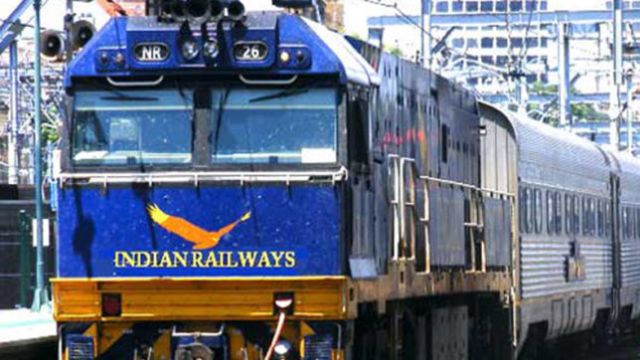
by admin | May 25, 2021 | Corporate, Corporate finance, Corporate Governance
 By Arun Kumar Das,
By Arun Kumar Das,
New Delhi : With expenditure continuing to far exceed earnings, Indian Railways is facing a dismal financial scenario with the operating ratio breaching the 112-per cent mark.
“The trend is unlikely to be reversed before March 2019 — when the National Transporter expects heavy advance ticket bookings for the upcoming summer vacation, which could ease the pressure,” Railway Ministry sources in the know told IANS.
Bookings for the summer vacation usually start in February-March as one can reserve tickets 120 days in advance.
A substantial amount is also expected to start coming from non-fare revenue such as the station redevelopment project and advertisements, the sources added.
The Railways’ total earnings is way behind target — it had earned Rs 1.15 lakh crore against the target of Rs 1.22 lakh crore at the end of November this year, a shortfall of Rs 7,840 crore, according to a financial review prepared by the Railways.
The ordinary working expenditure of the national transporter was Rs 1.03 lakh crore as against the budget projection of Rs 98,441 crore by November-end this fiscal.
In passenger segment, it earned Rs 33,900 crore against the target of Rs 34,583 crore, a deficit of Rs 683 crore. Currently, the loss in the passenger business is hovering around Rs 30,000 crore.
As a result, the operating ratio is under stress and has touched 112.91 per cent mark, the data prepared by the Railways’ financial wing reveals.
This means that, in the April-November period, the national transporter spent Rs 112.91 to generate every Rs 100, which is reflective of a lower growth in traffic against the set target and heavy outgo on account of increased pension liability and working expenses.
The operating ratio is a gauge of operational efficiency that measures expenses as a proportion of revenue. Besides the working expenses, there are other expenditures — including pension liability, expenditure of the Railway Board and railway institutions — which has far exceeded the total incomes during April-November 2018, resulting in the higher operating ratio.
A higher ratio also indicates less ability to generate surplus funds that could be used for capital investments such as laying new lines and manufacturing more coaches.
The Railways has earmarked its highest ever capital expenditure of Rs 1.49 lakh crore for the current fiscal with the focus on capacity augmentation, electrification and overall infrastructure upgradation.
(Arun Kumar Das can be contacted at akdas2005@gmail.com)
—IANS
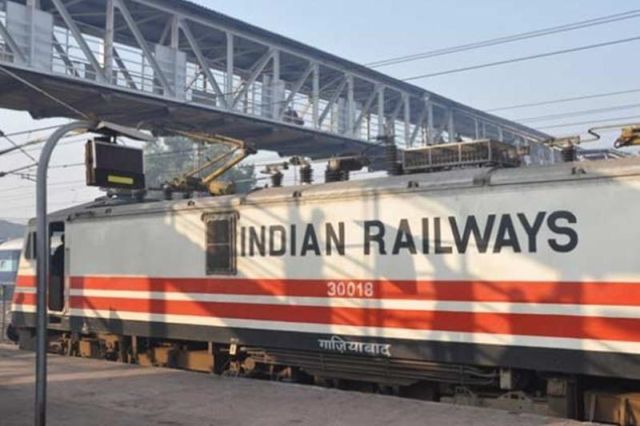
by admin | May 25, 2021 | Corporate, Corporate Governance, Opinions
 By Sujit Chakraborty,
By Sujit Chakraborty,
Agartala : Indian Railways, besides incurring additional costs, has had to confront unique challenges in laying tracks in the mountainous northeastern region due to its topography, soil and natural challenges, a top official has said.
According to Commissioner of Railway Safety (CRS-NE Circle) Shailesh Kumar Pathak, the landscape, soil conditions and other natural challenges forced the railways to spend much more money and to confront diverse challenges in the northeastern region, comprising eight hilly states.
“Compared to the northeastern region, the spending and the challenges are much less in the mainland states,” Pathak told IANS after examining newly-laid railway tracks in Tripura.
The Northeast Frontier Railway (NFR), one among the 17 railway zones in India, is responsible for extending the railway lines and maintaining train services in seven districts of West Bengal and five districts in north Bihar, besides the eight northeastern states, including Sikkim.
Pathak, a senior engineer of the Civil Aviation Ministry, said: “The NFR gets to work at optimum pace for only four to five months a year as the region records intense rain from March to end-October with the actual monsoon running from June to September. In the other states of India, the good working season is for at least eight months.”
“The northeastern states and large parts of the Himalayan region are siltation- and landslide-prone areas. The Railways has to take extra precautions to deal with the natural adversities. A lesser working period makes the job tougher for railway engineers and others,” he added.
According to the official, the per-kilometre expenditure of laying single-line tracks in the northeastern region is Rs 9 to 12 crore while it is Rs 5 to 6 crore in the plains. Laying a double-line track in the northeast costs Rs 20 to 25 crores per kilometre against Rs 10 to 15 crore in the plains.
“Land acquisition, forest clearances, syndicate trouble and finding skilled workers are the other impediments in the northeastern and eastern region,” Pathak said.
He said that the NFR has been trying hard to extend the railway lines in three remaining capital cities of northeast India, excluding Meghalaya’s Shillong and Sikkim’s Gangtok, by 2020.
Assam’s main city of Guwahati, Tripura’s capital Agartala and Arunachal’s captal Itanagar already linked with the railway network.
“Due to land-related problems, the expansion of rail network in Meghalaya and Sikkim has turned into a non-starter. Work is on to extend the railway network in Manipur, Mizoram and Nagaland,” the official explained.
The NFR is also laying new railway tracks at three places along India-Bangladesh border in Tripura and that would facilitate the carriage of passengers and goods from the northeastern states on the Bangladeshi railway network.
With southern Tripura’s Sabroom just 75 km from the Chittagong seaport in southern Bangladesh, the projects, together worth Rs 1,150 crore, are to be completed by March 2019.
The Indian and Bangladeshi railways are laying 15 km of tracks at a cost of Rs 963 crore between Agartala and Akhaura in Bangladesh to link the networks of the two neighbours.
The NFR has already laid a 75-km rail line up to southern Tripura’s Belonia aiming to link the Bangladeshi network on the other side of the border in Feni district.
Work is also on to lay a 39-km line from Sabroom to the border.
The NFR’s Chief Administrative Officer, A.K. Yadav, said that due to the large number of rivulets and small rivers, many small, medium and big bridges, besides many tunnels, have to be built in the northeastern region.
“India’s longest 11.55 km rail tunnel is now under construction as part of the 111-km Jiribam-Tupul-Imphal line that ends in the Manipur capital. This is longer than the the 11.2 km Pir Panjal tunnel on the Banihal-Qazigund line in Jammu and Kashmir,” Yadav told IANS.
(Sujit Chakraborty can be contacted at sujit.c@ians.in)
—IANS
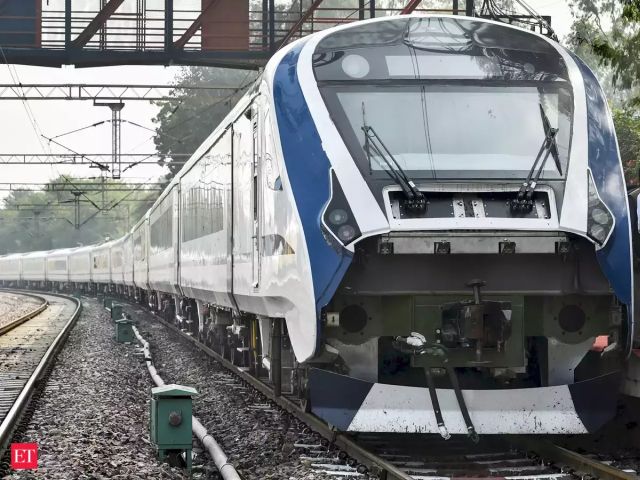
by admin | May 25, 2021 | Corporate, Corporate Governance
 By Arun Kumar Das,
By Arun Kumar Das,
Onboard Train-18 (Kota) : With the Train 18 speeding up to 180 kmph between Kota junction and Kurlasi station during a trial on Sunday, efforts are on to launch the first indigenously-built Trainset on December 25 between New Delhi and Varanasi.
“Christmas Day also happens to be the birthday of late Prime Minister Atal Bihari Vajpayee and it would be a tribute to the great statesman if we manage to launch the next-generation train on that day,” a senior railway official told IANS.
Since the input cost of the Rs 100-crore train is high, the fare structure will be also be higher than the normal fare.
However, the official added that the decision on its launch date and fare were yet to be taken as the trial was not yet complete.
According to the tentative plan, the train will start from New Delhi station at 6 a.m. and is expected to reach Varanasi, Prime Minister Narendra Modi’s parliamentary constituency, at 2 p.m.
For the return journey, the train will start at 2.30 p.m., from Varanasi and reach the national capital at 10.30 p.m.
It was a thrilling experience onboard Train 18 during the various trials on Sunday — including a speed run on a straight track, speed test on one degree curve at 150 kmph, and two degree curve at 140 and 150 kmph — on the 113 km stretch from Kota to Kurlasi under the watchful eyes senior railway officials as well as those from the national transporter’s Research Design and Standards Organisation.
Ladoos were distributed in the train when it clocked 180 kmph. The first sweets were offered to loco pilot Padam Singh Gurjar and his assistant Onkar Yadav.
“We are quite excited to be part of this great occasion,” Padam Singh told IANS after having the sweet.
“I feel proud to be part of this historic trial,” added Yadav.
It was a smooth ride for those inside — occupying rotating seats to match the direction of the train – as the Train 18 became the first train to touch such high speed on the Indian rail network.
The train started its trial run at 9.30 a.m., from Kota, and returned to the junction at 6 p.m., after negotiating several rivers, bridges and curves.
The Trainset does not require a locomotive as it is a self-propelled on electric traction, like metro trains.
Now the Trainset has to undergo what is called a long confirmatory run and also test its emergency braking distance before it gets a clearance from the Commissioner, Railway Safety (CRS), for commercial operations to commence.
“We are expecting the trials to be over in a week and after that we will seek CRS clearance,” said the official.
Although the speed touched 180 kmph during Sunday’s trial run, the Train-18 will only be allowed to run at a maximum speed of 160 kmph in its commercial operations.
After the successful completion of 115 kmph test run on the Bareli-Moradabad section last week, the next-generation train — indigenously developed at Chennai’s Integral Coach Factory — is required to undergo the 180 kmph trial run here till December 4.
Equipped with world class facilities, the Rs 100 crore Trainset aims to take passenger-comfort to a new level with onboard WiFi, a GPS-based information system, touch-free bio-vacuum toilets, LED lighting, mobile charging points, and a climate control system that adjusts the temperature according to occupancy and weather.
The 16-coach train will have two executive compartments with 52 seats each, and trailer coaches will have 78 seats each.
(Arun Kumar Das can be contacted at akdas2005@gmail.com)
—IANS
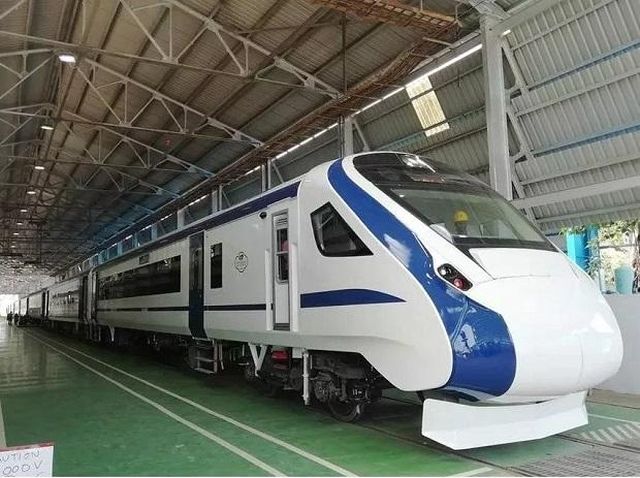
by admin | May 25, 2021 | Corporate, Corporate Governance
 By Arun Kumar Das,
By Arun Kumar Das,
New Delhi : Indian Railways has set up a separate team to ensure speedy trials of the much-awaited Trainset, a first for the national transporter, that will roll out on October 29 from Chennai’s Integral Coach Factory (ICF).
A separate directorate of six senior officials has been created in the Research Designs and Standards Organisation (RDSO) to ensure speedy trials of the first indigenously-built semi-high speed train and subsequently other such trains in future on the Indian rail network.
Branded Train-18, the AC train with 16 coaches will undergo short runs near ICF for five days for testing its braking system, the on board air conditioning and other systems — as well as for familiarising the crew with the control systems — before reaching New Delhi on November 7.
“The new train will then move to the Moradabad-Bareli section for 150 kmph speed trials for a few days,” a senior Railway Ministry official told IANS. Thereafter, the train will run at 160 kmph between Kota and Sawai Madhopur for the final trial.
“Both sections will have empty and sandbag loaded trials and the RDSO will monitor the entire process before giving the green signal for the commercial run between Delhi and Bhopal,” the official said.
A trainset is a set of coaches coupled mechanically and electrically with driving cabins at both ends and distributed traction power across the train.
Dubbed as next-generation train, it is capable of running at speeds of up to 160 kmph.
The acceleration and decceleration is faster in a trainset as compared to other trains hauled by locomotives, thereby considerably reducing the travel time.
Driven by a self-propulsion module and fitted with CCTV cameras, it would have two executive compartments in the middle with 52 seats each, while the other coaches would have 78 seats each.
Estimated to cost about Rs 100 crore, the first trainset will have a few imported components such as French-made seats, brakes and couplers from Germany, along with a Czech-made door system — all of which are to be indigenised for the next rake.
ICF will be manufacturing six trainsets under the Train-18 programme, of which two are planned with sleeper class coaches.
Aimed as a landmark improvement in passenger travel, rotating seats which can be aligned in the direction of travel, onboard infotainment system with non-stop Wi-Fi, vacuum toilets, sliding doors and continuous windows for a contemporary modern look are some other features of the trainset.
(Arun Kumar Das can be contacted at akdas2005@gmail.com )
—IANS
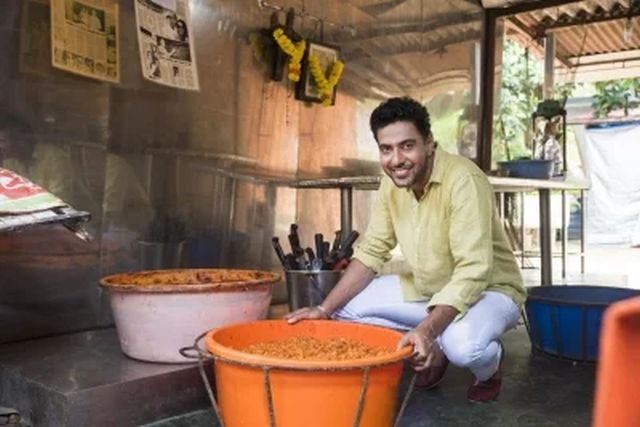
by admin | May 25, 2021 | Entrepreneurship, Interviews, Social Entrepreneur, Success Stories

Chef Ranveer Brar
By Vishnu Makhijani,
New Delhi : Time was when many trains on the Indian Railways network featured dining cars where you could savour a leisurely meal of your choice as the landscape rolled by. Today, you are served at your berth in a plastic container containing food that is not necessarily your choice. Fear not. The good times are back as Chef Ranveer Brar, after an arduous 50-day shoot unveils “The Station Master’s Tiffin” on the small screen to literally take you back into time.
“We realised that we are probably the last generation that has seen the railways in their full bloom because we never used to fly, we used to always take the trains. That was a story that needed to be told. The food that is so famous or used to be famous on the stations that people used to wait for, wake up for or die to eat also needed to be spoken about,” Brar, Masterchef India judge, senior executive chef and travel show host among the multifarious caps he wears, told IANS in an email interview.
“Destinations that are famous because of the trains needed to be spoken about. There is a whole culture and sub-culture of eating that trains have created that needed to be spoken about and hence we said let’s do a show and also have some fun,” Brar said of the 14-episode show that premiers on LF channel on October 3 and will air on Wednesday’s and Thursdays at 8 p.m.
Extensive research has gone into the series.
Two recce teams were at it for more than a year but after two episodes were shot, it was realised that not enough research been done.
“So we went back into researching. We hired experts of the subject. Among them was Arup Kumar Chaterjee who has written a book called “The Purveyors of Destiny” on the Indian Railways. We tried to do it in the right way,” said Brar, whose other TV shows are “Great Indian Rasoi”, “Ranveer’s Cafe, “Healthy but Tasty” and “Global Menu” and who has also authored a book titled “Come Into My Kitchen”.
Ever a hand-on man, Brar was on the road for 50 days during the shooting.
“The shooting has been an exhilarating experience. Being a part of the culinary field, I have had the opportunity to visit various countries and learn new culinary techniques. But travelling through my own country in trains, visiting wonderful places, discovering inspiring stories of people who treat you as their own household member, was hands down one of the best experiences of my life. The entire journey encompasses all the four corners of the country and viewers will get to enjoy an insider’s perspective.
“The shooting was on the trains, on railway stations and it was at destinations where only trains can take us. So, for example, we also shot at Sundilla (in Telengana), a destination where only a train takes you.
“The selection (of trains and sations) was based on the stories that needed to be told. For example, we knew we had to go down south because the Pamban Bridge (which connects Rameswaram town on Pamban Island to the mainland) was a story that needed to be told. The Konkan Railway and other broader stories needed to be told for the Indian Railways, which then decided the smaller stories that will accompany them,” Brar explained.
He, however, was unwilling to part with other details of the show “as this would spoil the surprise”.
Any interesting nuggets from the shooting process?
“Lots of interesting nuggets. One of my most fascinating train journeys has always been the toy train from Kalka to Shimla and through the Barog tunnel. I think people still believe it’s haunted. It was quite a thing when I walked in it with a lantern at 1 a.m. in the night. It was very interesting.
“Also, Sundilla ke Ladoo is something many people have grown up eating but never knew how it is made because nobody stops at Sundilla. I went back to Sundila and figured out how the ladoos were made. That was fascinating because otherwise you just pick the ladoo at the station and just leave,” Brar said.
What’s next on the cards?
“I will continue travelling and exploring, that is for sure. Let’s see where the travel and journey takes me,” he said.
The show will also be telecast on Zee TV every Sunday at 12 noon from October 7 onwards.
(Vishnu Makhijani can be contacted at vishnu.makhijani@ians.in)
—IANS





